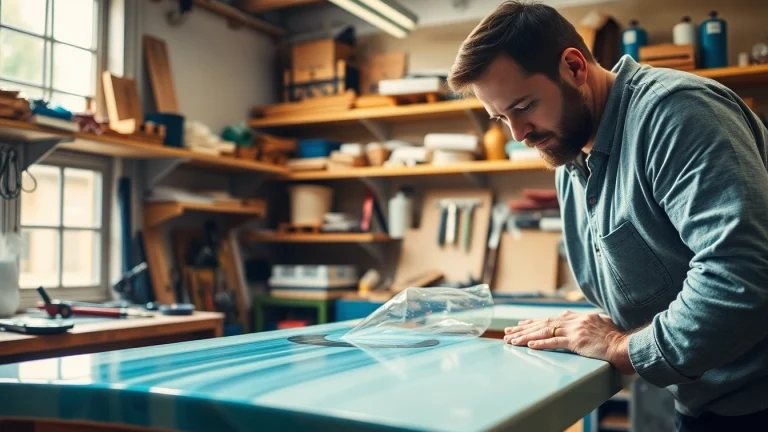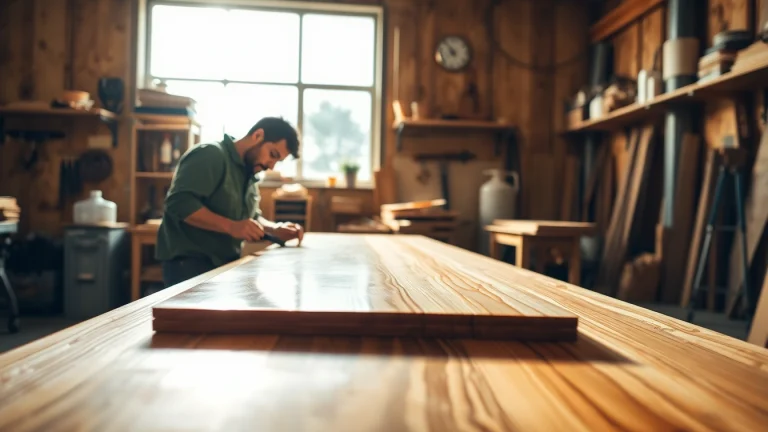
Maximizing the Benefits of Laminating Resin in Various Projects
Understanding Laminating Resin
What is Laminating Resin?
Laminating resin is a type of synthetic resin that is primarily used in the process of lamination, which involves bonding layers of materials together. This resin offers excellent adhesion, resulting in a high-strength bond that is essential for various applications, particularly in the construction and manufacturing industries. Laminating resin is characterized by its ability to form a solid layer over surfaces, effectively encapsulating the materials beneath it. This versatility makes it an ideal solution for projects requiring both structural integrity and aesthetic appeal.
Types of Laminating Resin
Laminating resin typically falls into two main categories: polyester and epoxy resin. Each type has unique properties suited for specific applications.
Polyester Laminating Resin
Polyester laminating resin is known for its cost-effectiveness and ease of use, making it a popular choice for various DIY and commercial projects. It is traditionally used in marine applications due to its resistance to water and environmental factors. This type of resin is also relatively fast-curing, allowing for quicker project turnaround times.
Epoxy Laminating Resin
Epoxy laminating resin, on the other hand, is recognized for its superior adhesion and durability compared to polyester. It forms a strong bond that can withstand significant stress and is often preferred for high-performance applications, such as in aerospace or automotive industries. Epoxy resin also has excellent chemical resistance, making it suitable for various environments.
Applications of Laminating Resin
Laminating resin sees a broad range of applications across different industries:
- Boat Construction: Used extensively in building boats, laminating resin provides the necessary strength and water resistance.
- Composite Manufacturing: This resin is vital in creating composite materials, particularly when reinforcing fabrics such as fiberglass.
- Repair Work: Laminating resin can effectively bond and repair damaged surfaces, whether in furniture, vehicles, or structures.
- Molds and Patterns: Ideal for producing molds that require a durable, water-resistant finish.
Benefits of Using Laminating Resin
Durability and Strength
One of the foremost benefits of using laminating resin is the exceptional durability it provides to bonded materials. Whether polyester or epoxy, laminating resin creates a structure that can withstand environmental stressors such as moisture, heat, and chemicals. This characteristic is particularly crucial in industries where reliability and longevity are paramount.
Versatility in Projects
Laminating resin accommodates a wide variety of projects, from small DIY tasks to large industrial applications. Its adaptability allows for usage in both indoor and outdoor settings, as well as in diverse materials, making it a go-to option for builders and artisans alike. From crafting furniture to constructing marine vessels, laminating resin proves its worth across the board.
Cost-Effectiveness
From a financial perspective, laminating resin often presents a cost-effective solution when compared to other binding agents. Its efficiency in curing times and ease of application reduce labor costs, making it an attractive option for both commercial production and individual users. When choosing laminating resin, users can expect quality results without overspending on materials or labor.
Proper Techniques for Laminating Resin Application
Preparation of Materials
Before applying laminating resin, thorough preparation is essential. Begin by ensuring that all surfaces are clean, dry, and free from contaminants such as dust, grease, or moisture. Scuffing the surface with sandpaper can increase adhesive strength. It is also advisable to gather all materials and tools beforehand to facilitate a smooth application process.
Mixing and Handling Laminating Resin
Mixing laminating resin correctly is crucial for optimal performance. Follow the manufacturer’s instructions regarding ratio and mixing times. Ensure that you use clean tools and perform the mixing in a well-ventilated area. Understand that certain types of laminating resin have specific pot life, which dictates the time you have to use the mixture before it begins to cure.
Application Methods
There are several effective methods for applying laminating resin, including:
- Brush Application: Ideal for smaller projects or detailed work, brushing allows for precision in applying resin to intricate areas.
- Roller Application: Using a roller can expedite the process on larger surfaces. It ensures even distribution and reduces the chances of excess resin in one spot.
- Vacuum Bagging: This advanced technique is often used in composite manufacturing, where vacuum pressure ensures a strong bond and reduces air bubbles.
Common Challenges When Working with Laminating Resin
Preventing Bubbles and Imperfections
Bubbles can form in the resin mixture due to improper mixing or trapped air. To minimize this risk, mix gently and avoid whipping the resin. Using a vacuum pump prior to application can also help eliminate air bubbles within the resin. Moreover, applying heat to the mixed resin can aid in bubble rise, allowing them to escape.
Managing Curing Times
Curing time is critical in resin projects, as it dictates how long you must wait before handling or using the finished product. Timing can vary based on the type of resin used, temperature, and humidity levels. Always consult the product guidelines and plan your project timeline accordingly. Utilizing accelerators can also shorten curing times if needed.
Safe Work Practices
When working with laminating resin, prioritize safety. Always wear protective gear, including gloves, goggles, and a respirator if necessary, particularly when working in non-ventilated spaces. Additionally, familiarize yourself with the resin’s Material Safety Data Sheet (MSDS) for specific handling and first aid measures.
Best Practices for Storing Laminating Resin
Temperature and Environment Control
Proper storage conditions significantly affect the shelf life and efficacy of laminating resin. Store the resin in a cool, dry place away from direct sunlight and extreme temperatures. Ideally, keep it in a temperature-controlled environment that consistently stays within the manufacturer’s specified range.
Expiration and Shelf Life
Every type of laminating resin comes with a defined shelf life, typically indicated on the packaging. Use the resin before its expiration date to ensure optimal performance. It’s advisable to label containers with the date of purchase and expiration to keep track of how long products have been stored.
Reusable Tools and Equipment Maintenance
After applying laminating resin, clean tools and equipment thoroughly with an appropriate solvent recommended by the resin manufacturer. Dispose of used materials properly, as uncured resin may still pose health risks. If you clean tools while the resin is still wet, it will save you from ruining brushes and rollers, extending their usability for future projects.


